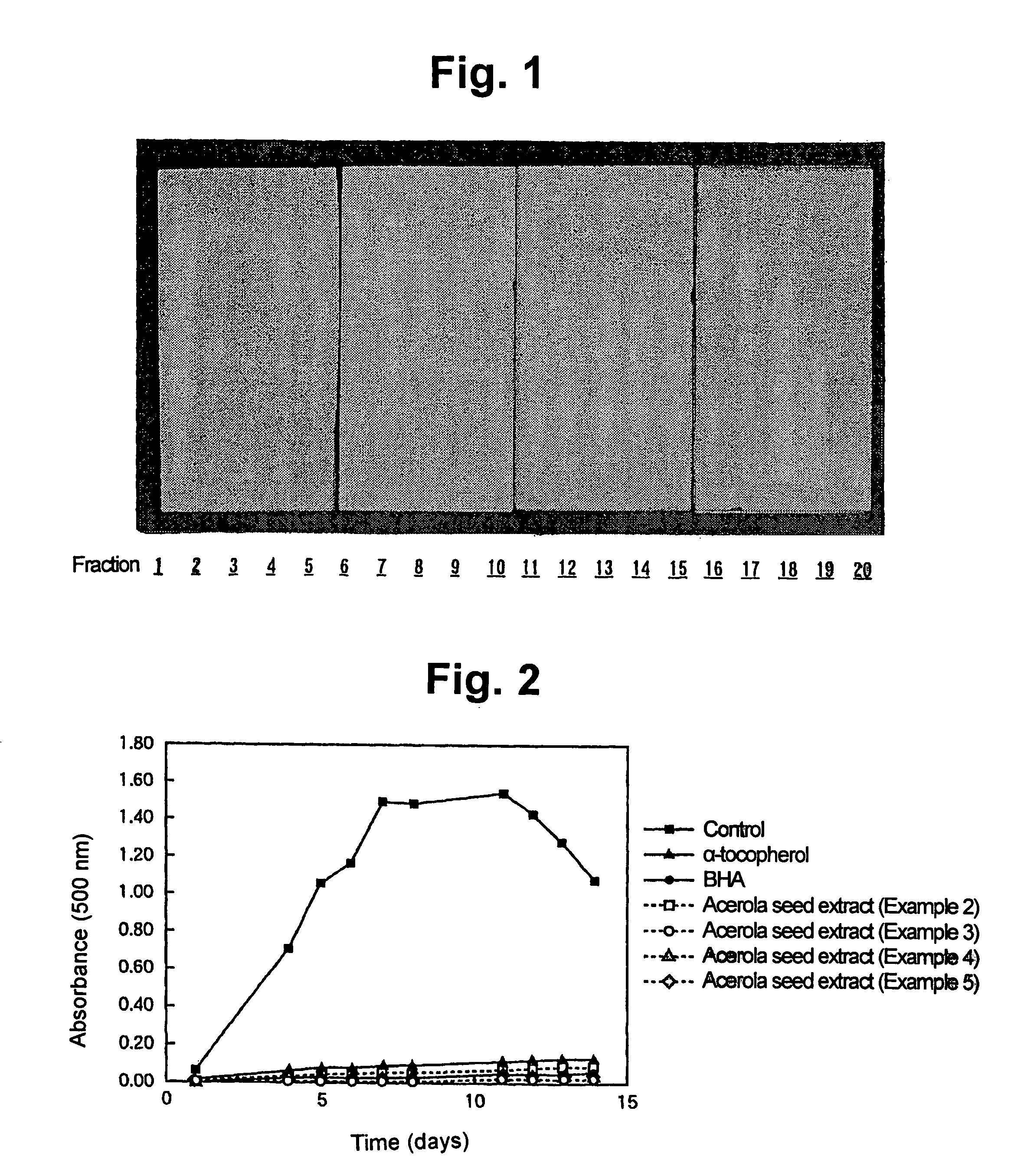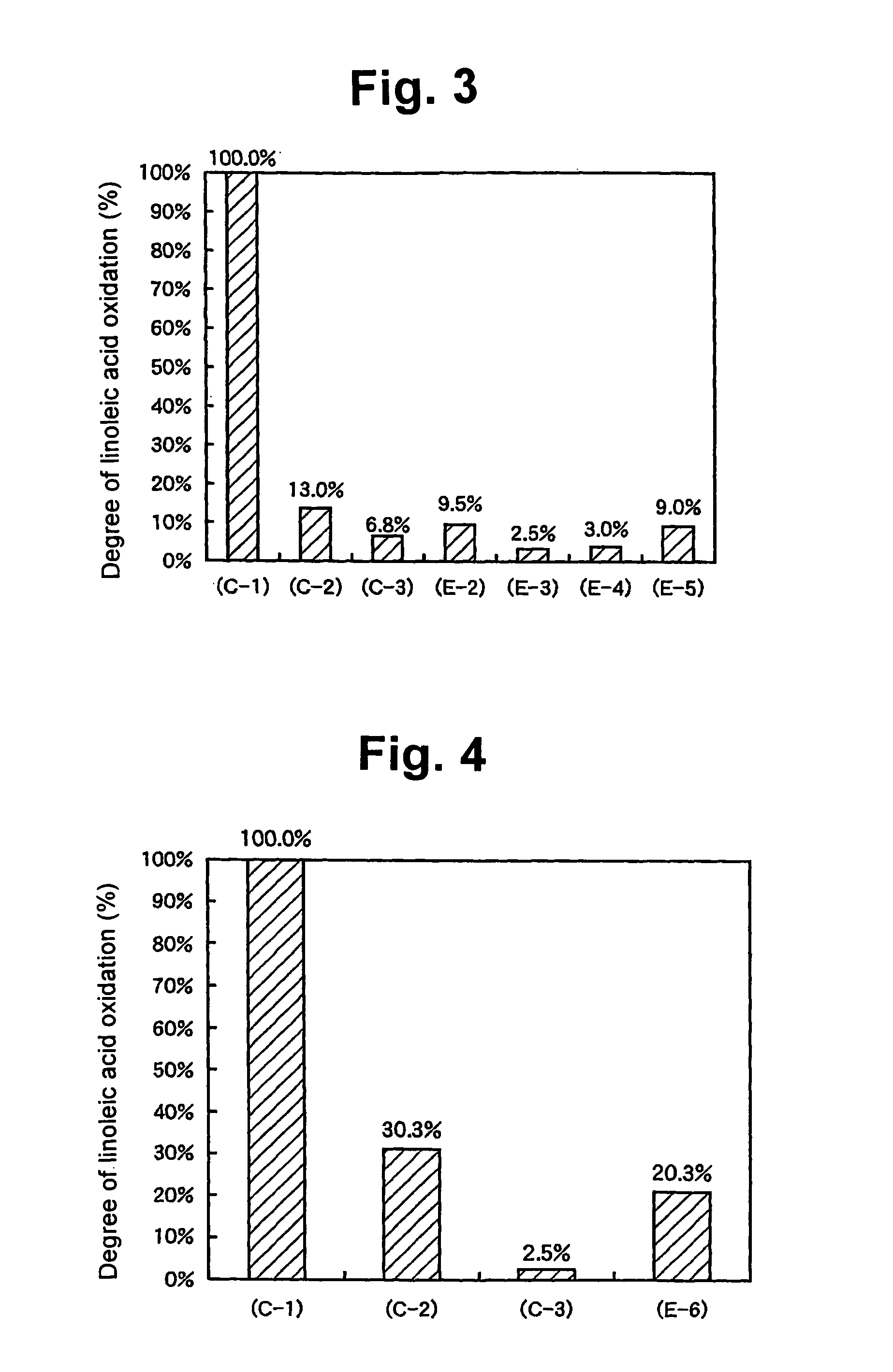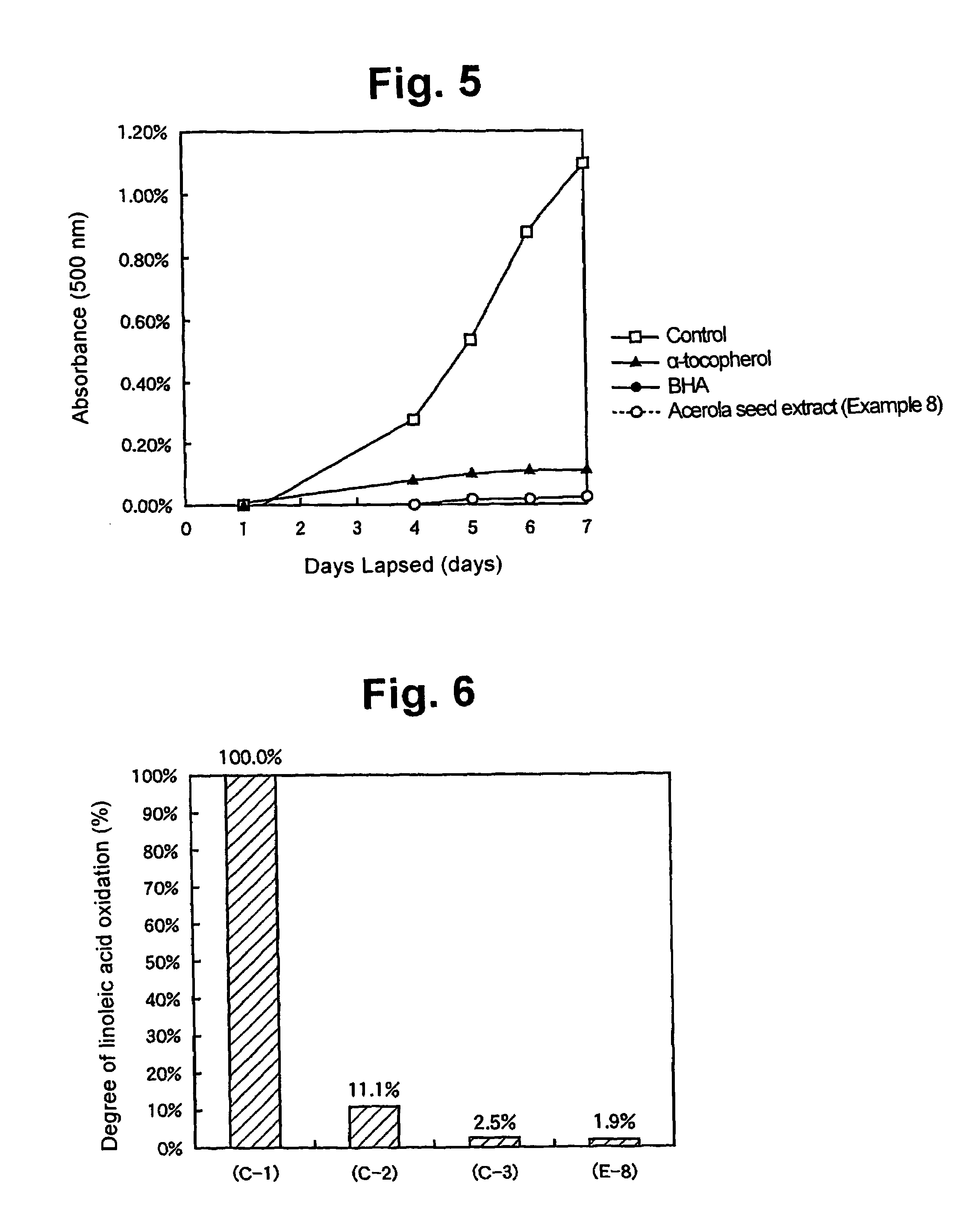Antioxidant, skin preparation for external use, cosmetic and food
a technology for skin preparation and external use, applied in the direction of anti-noxious agents, drug compositions, impression caps, etc., can solve the problems of deterioration of product quality, decrease in effective nutritional value, and prone to peroxidation of unsaturated fatty acids in oils and fats, and achieve excellent antioxidative effect and high safety
- Summary
- Abstract
- Description
- Claims
- Application Information
AI Technical Summary
Benefits of technology
Problems solved by technology
Method used
Image
Examples
example 1
[0049]Acerola seeds were washed, dried, and crushed. 6140 g of the crushed product was mixed with sevenfold weight of methanol, and stirred at room temperature overnight. The entire mass was centrifuged and filtered. The filtrate was concentrated and evaporated to dry, to obtain 225.89 g of extract (A).
[0050]Extract (A) thus obtained was mixed with 2000 ml of water and further with 1200 ml of hexane and shaken. The separated aqueous layer was recovered, mixed with hexane, and shaken in the same way as above. This operation was repeated twice. The aqueous layer separated from the hexane layer was mixed with 1200 ml of ethyl acetate and shaken, which operation was repeated ten times. The separated ethyl acetate layers were collected, concentrated, and evaporated to dry, to thereby obtain 11.48 g of concentrate (A). Subsequently, the concentrate (A) was fractionated by silica gel chromatography on a column of silica gel (Wakosil C-300, manufactured by WAKO PURE CHEMICAL INDUSTRIES, LTD...
example 2
[0059]100 g of washed acerola seeds were crushed, mixed with threefold volume of water, and shaken at room temperature overnight. The entire mass was filtered through a glass filter, a 0.65 μm filter, and a 0.22 μm filter, and the filtrate was concentrated and evaporated to dry, to thereby obtain 1 g of an extract.
[0060]Next, the antioxidative activity of the obtained extract was measured by antioxidative activity measurement using linoleic acid (ferric thiocyanate method).
[0061]Specifically, a mixture of 0.4 mg of the acerola seed extract, 2 ml of 99.5% ethanol, and 2 ml of distilled water was mixed with a reaction liquid composed of 2 ml of 2.5% (w / v) linoleic acid (99.5% ethanol solution) and 4 ml of a 0.05 M phosphate buffer (pH 7.0), and placed in a brown threaded bottle, to thereby prepare 10 ml of a test liquid. On the other hand, test liquids as positive controls were prepared in the same way using α-tocopherol or BHA in place of the acerola seed extract at the same content ...
example 3
[0064]100 g of washed acerola seeds were crushed, mixed with threefold volume of a 25 vol % aqueous solution of ethanol, and shaken at room temperature overnight. The entire mass was filtered through the same filters as in Example 2, and the filtrate was concentrated and evaporated to dry, to thereby obtain 1.69 g of an extract.
[0065]The antioxidative activity of the obtained extract was measured in the same way as in Example 2. The change in absorbance against time is shown in FIG. 2, and the degree of oxidation of the sample on day 14 of the test is shown in FIG. 3.
PUM
| Property | Measurement | Unit |
|---|---|---|
| temperature | aaaaa | aaaaa |
| temperature | aaaaa | aaaaa |
| temperature | aaaaa | aaaaa |
Abstract
Description
Claims
Application Information
 Login to View More
Login to View More - R&D
- Intellectual Property
- Life Sciences
- Materials
- Tech Scout
- Unparalleled Data Quality
- Higher Quality Content
- 60% Fewer Hallucinations
Browse by: Latest US Patents, China's latest patents, Technical Efficacy Thesaurus, Application Domain, Technology Topic, Popular Technical Reports.
© 2025 PatSnap. All rights reserved.Legal|Privacy policy|Modern Slavery Act Transparency Statement|Sitemap|About US| Contact US: help@patsnap.com



